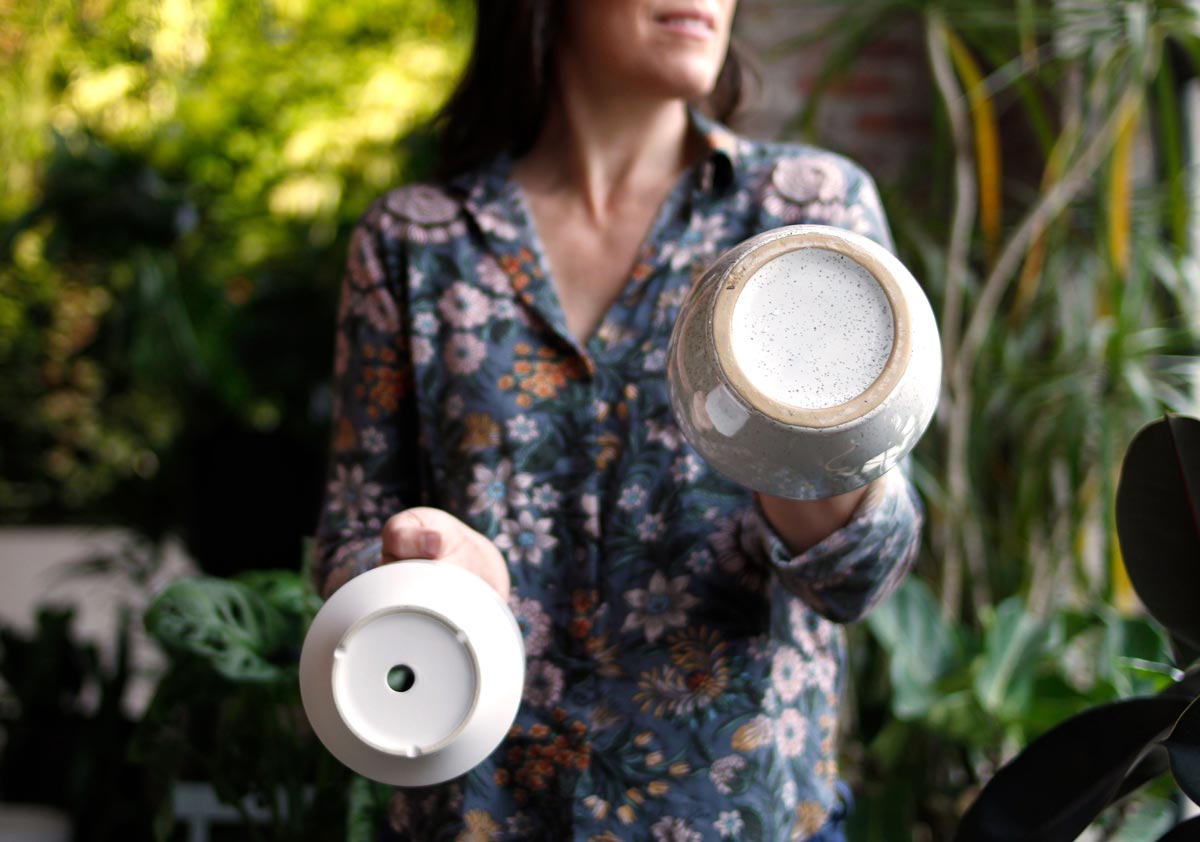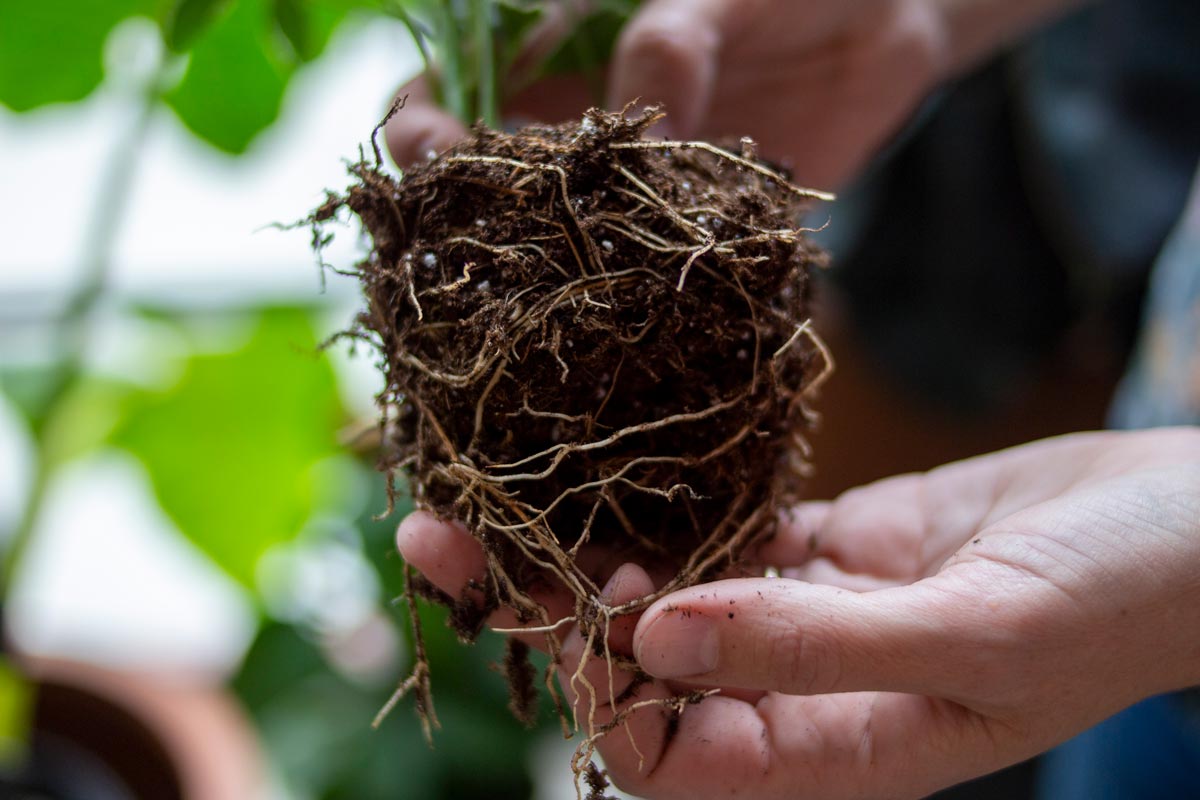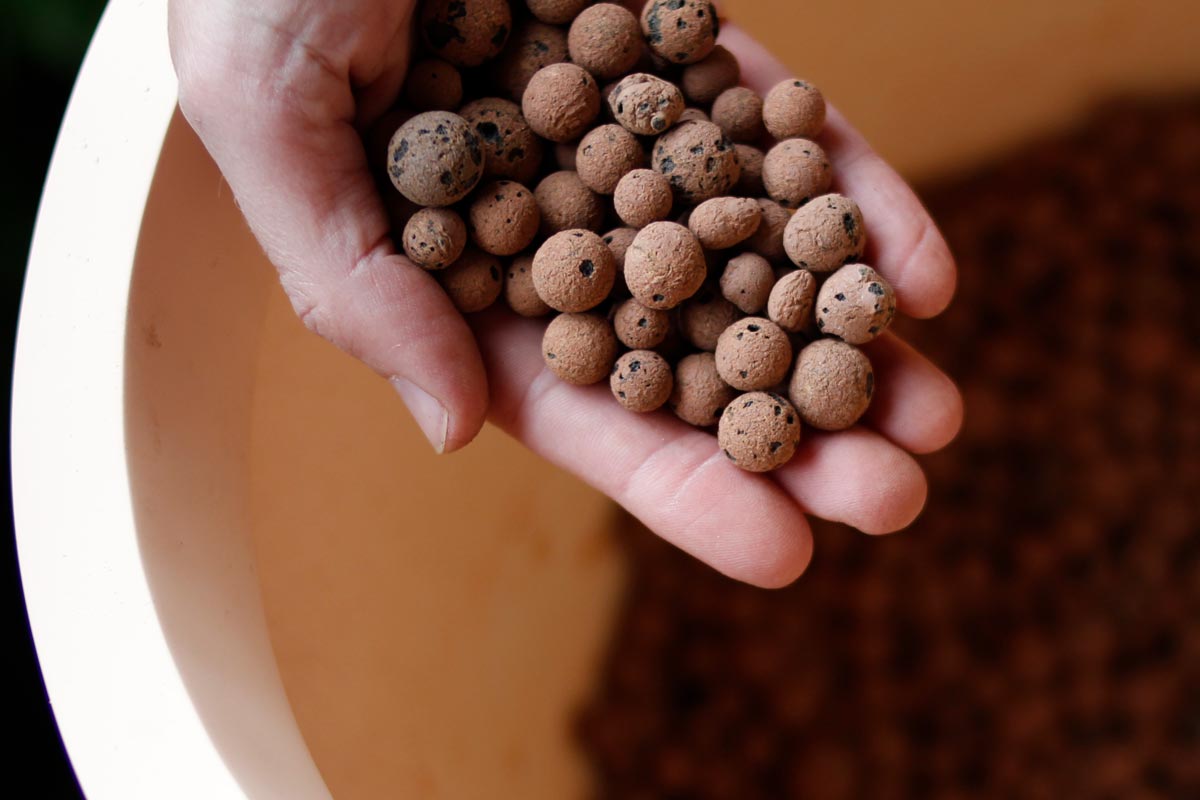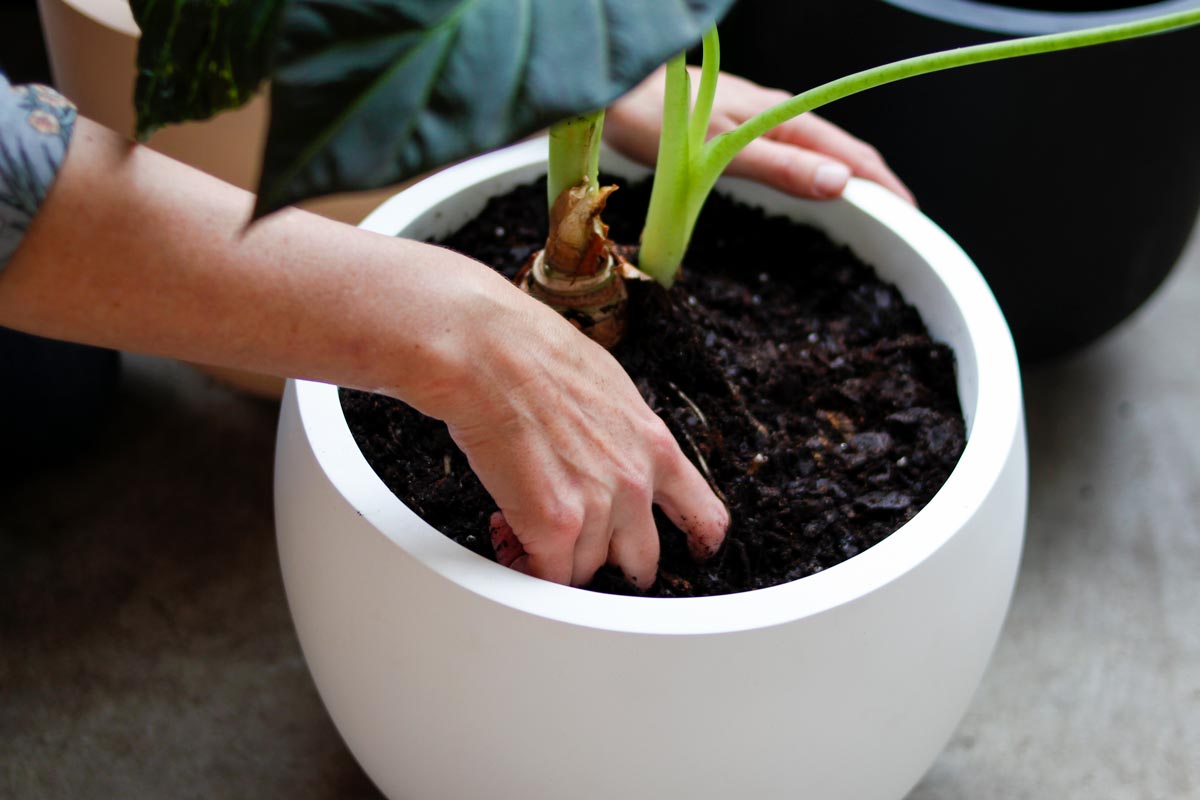Does my pot need a drainage hole?

One of the most common questions we hear is “can I pot my plant into a pot without a drainage hole?” While there are contradicting opinions among horticulturalists, in our professional experience we have found it not only possible, but sometimes even preferable to plant your indoor tropicals in planters without a hole in the bottom. Planters without drainage holes offer a leak-free, clean aesthetic, and protect floors from damage, especially with larger plants and trees whose pots are tough to move. The key to success with these pots is providing an ample drainage layer so excess water can drain away from the root system, ensuring the roots maintain access to air.
The drainage question
NURSERY POT VS. DIRECT PLANTING
One way to utilize a vessel without a drain hole is to simply place the plastic nursery pot inside the vessel. While this is an easy short term solution, ultimately excess water can still collect at the bottom of the pot if you aren’t vigilant and lead to root rot.
We strongly recommend repotting plants out of the nursery container when bringing them home to ensure your plants have healthy, nutrient-rich soil. Direct planting is our preferred method as it provides a healthier long-term environment for your plants.

Root health
Root health is fundamental to happy, healthy plants. Maintaining root health requires proper soil and excellent drainage. Utilizing drainage materials that have varying particulate sizes creates pockets of air beneath the soil. Roots need this air to thrive. Many gardeners use broken terra-cotta, gravel, or recycled packing styrofoam at the bottom on their pots to create this layer.
We prefer to use absorptive material like expanded clay aggregate, or aeration stone. Not only does this material provide those important air pockets, it also naturally absorbs moisture. Using aeration stone at the bottom of your pot ensures you won’t have a layer of standing water, which leads to root rot. Another benefit to using aeration stone is that it evens out the moisture levels in your pot. Because it absorbs water, the aeration stone acts as a reservoir from which the soil can draw moisture once it becomes too dry. We’ve found that a healthy layer of aeration stone can help extend the time between waterings and provide the consistent soil-moisture levels that plants prefer.

Touch the soil
In addition to a drainage layer in the bottom of the planter, it’s also important to use a good potting mix that is well draining and not too moisture retentive. Not all soils are created equal, you should look for a potting mix with a variety of particulate sizes that allows water to pass through, and still offers those all-important air pockets for root growth.
It’s best practice to regularly touch the top 2” of your plant’s soil to assess the moisture level in the pot, and go even deeper for larger potted plants. The goal is to assess the moisture closer to the roots, not just at the top of the pot. When watering in a planter without a drain hole it is even MORE important to feel the soil prior to watering to avoid soggy soil and water build up at the bottom of the pot. A soil probe is an efficient tool to easily assess the soil moisture deep in your pot. It gathers samples of the soil at varying depths so you can determine if the plant is ready for a watering. Plus it’s great for aeration and keeps your hands dirt free!

If you follow the steps of adding a drainage layer, using healthy soil, and monitoring moisture levels, a planter without a drainage hole can be a perfectly healthy home for your indoor plant.

